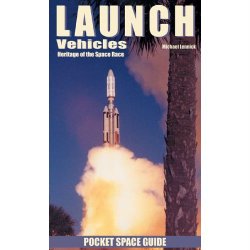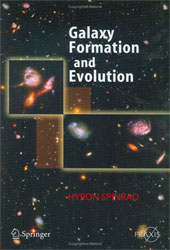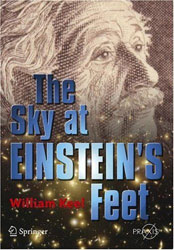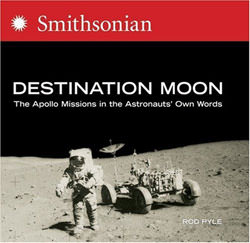Fighting the good fight. David meeting Goliath. Persevering against the odds. These phrases give images associated with a valiant struggle to succeed. William T. Vollmann in his book Uncentering the Earth shares his thoughts on the struggles of Nicholas Copernicus in relocating the Sun to the centre of the solar system. Though Copernicus did not undertake any physical fight, there certainly was conflict while he was promoting and publishing his ideas.
Continue reading “Book Review: Uncentering the Earth”
Book Review: Beyond Earth
Does humanity have a destiny? Are we to accomplish a task before ending as a species, or do we perhaps continue on, ever evolving and exploring? The explorers amongst us certainly want to continue, and their hopes are pointedly directed to the stars. The book Beyond Earth is a compilation of essays from visionaries who are committed to achieving this goal. Their ideas and plans show a decided conviction on a destiny that includes advancing our frontier off of Earth.
Continue reading “Book Review: Beyond Earth”
Book Review: Astronomy: Eyewitness Companions
There’s nothing like spending a warm summer’s evening sitting in pitch black while letting your eyes soar to the vaults of the heavens. A few twinkling hot shot stars steal the show, then more subtle but equally charming fine points of light gradually fill in the blank spots. Eventually, with eyes fully adapted to the dark, the heavens are ablaze with a panorama of elegance and variety. Accumulating years of people’s effort brings sense and order to this menagerie. Ian Ridpath with his book Astronomy makes a wonderful little guide for observers looking for a little sense, and it may turn a summer fling with the stars into a longer affair.
Continue reading “Book Review: Astronomy: Eyewitness Companions”
Book Review: Solar System Observer’s Guide
Postage stamp collectors often concentrate on particular types or themes. Amateur astronomers do the same, as a wealth of viewing pleasure came be had from choosing a small set of what’s available in the sky. Peter Grego in his book Solar System Observer’s Guide provides a thorough and descriptive aid for those astronomers who want to concentrate on our own small region of the universe. In it, he shows planets and other nearby celestial objects can be demanding and rewarding in their own right.
Continue reading “Book Review: Solar System Observer’s Guide”
Book Review: The Cosmic Landscape
When you think you have all the answers, it’s time to stretch boundaries. Physicists get to do this all the time, and their boundaries seem to have no end. Leonard Susskind in his book The Cosmic Landscape takes the reader along to share his perceptions of the ultimate boundary; the one about our universe. However, rather than stretching the boundary, it’s about the existence of a boundary itself that keeps that makes this book well strung together.
Continue reading “Book Review: The Cosmic Landscape”
Book Review: Space Shuttle Columbia
The space shuttle came into being with the promise of delivering on many hopes and dreams of today’s space farers. As a steady workhorse or a novel research platform, it was to be a high flyer and smooth glider. Columbia was the first of these shuttles to venture into the domains of outer space. In spectacular fashion, it proved the designers’ estimates and made low earth orbit a ready destination. Ben Evans, in his book Space Shuttle Columbia – Her Missions and Crews, recalls the numerous contributions which this single shuttle made during its many years of satisfying service.
Continue reading “Book Review: Space Shuttle Columbia”
Book Review: Pocket Space Guides

Large meals satiate big appetites; small ones quickly fill those with less ravenous hunger. Apogee Books is continuing publishing selections in their Pocket Reference Guide series. From this, 3 wonderful new treats come ready to serve to please the palate of those slightly curious about our activities in space. Be warned though, a bite from any of these can easily translate into a yearning for much more!
Michael Lennick fills his literary plate via a guide entitled, Launch Vehicles-Heritage of the Space Race; In it, he provides a robust ensemble that describes scientists and engineers who were instrumental in getting people rocketing off the ground. Leading the mix is Tsiolkovsky and Oberth. Write-ups of many other luminaries follow. However, the descriptions aren’t about the people but about the contributions they made to our nascent space travelling efforts. About halfway through the text portion of the guide, Lennick completes the biographies and changes focus to the vehicles. He shows how the German’s V-2 program was crucial in establishing large scale rocketry in the USA and USSR. He continues on with how this evolved into the USs Saturn V and the USSR’s R-7. Though brief, Lennick’s guide captures that illustrious time of rapid development and success due to the space race.
As with other space guides from Apogee, the second half of Lennick’s is comprised completely of pictures. These are mostly photographs that show launch vehicles either sitting on majestically rising moments after ignition. The photographs are all in colour, are very clear and do show the magnitude and power of these engineering marvels. Most photo’s are of major launch systems of the US. As well though, there’s the Pegasus, the Burna and the H-2a amongst a few others less well known. Further, the adjacent captions give the reader brief yet insightful understanding of the history and significance of the photograph’s subjects.
With the ‘Launch Vehicle’ space guide, Michael Lennick has prepared a great treat for emerging engineers. They could easily visualize the utility of their craft. The guide could be improved with a text that extends into launchers past Saturn V, especially as many of the photographs are of current launch vehicles. Yet, this concern is small potatoes for the wonderful fare laid out.
The next guide comes from Stephen Whitfield. He shows us his culinary like skills of the pen in his space guide entitled, Deep Space. Herein, planets are on the menu, especially those outside the orbit of Mars. Whitfield manages to fill up the guide with appropriate tidbits even though few probes were sent to sample these locales. First he outlines the challenges of sending the probes billions of kilometres away. Then he lists each visited planet and discusses much of the general scientific knowledge that resulted. In addition to the well known facts, he offers up the rarer delights such as a description Polydeuces, the Trojan moon. He closes the text section by listing some major missions being planned and their objective. Not all of these are related to sensing planets but each focuses on an issue of deep space.
Whitfield’s illustration section is also mostly photographs or satellite images. Some are close up views of the probes undergoing testing as with Cassini and Huygens. Most others are of planets and their moons. All are colour and include my personal favourite, Io. Equally intriguing is an electric blue aurora from Jupiter. A few smatterings of Hubble eye candy, whether galaxy or nebula, tease the eyes on the final pages.
The breadth of Stephen Whitfield’s space guide ‘Deep Space’ is daunting. It extends from GALEX that studies galaxies over 10 billion years away to the Huygen probe drifting down to Tritan’s surface. Because of this, the flow and scale is a bit uneven. Whitfield may either confuse or tease the reader to no end. In all though, he also serves up a credible dish to wet the appetite of a young astronomer.
The third and final selection for this review is Robert Godwin’s space guide entitled Mars. With so much attention being paid on this planet, his timing is as well done as his presentation. After a one-page fact sheet, Godwin jumps into the human history related to Mars and its been lengthy. After being thought of as the god of war and fertility, Godwin brings in reality with Hershel seeing the polar caps change size. This meant seasons! From here on, Godwin alludes to people’s fascination, even today, with the possibility of life on the red planet. As he puts it, we won’t expect the Martian monsters of Orson Welles fame, yet many believe that some semblance of life may exist or have existed there. Godwin closes his text section with an up to date recount of the most recent probes, Odyssey, Explorer, Spirit and Opportunity.
The photographs in Godwin’s illustration section keep perfect pace with the text. The beginning is a colour map by Richard Proctor dated 1871. A few choice reprints of magazine covers depict the burgeoning interest in this planet. Following are clear images from the most recent probes which give ground level, true colour perspectives of Martina hills, sunsets and even meteorites. With all the information supplied by Godwin, it’s difficult to remember that humans have yet to visit Mars.
Godwin’s guide will have little new for those who have been following the news in the science column or reviews in the entertainment section. But, this guide seems perfect for those interested in pursuing a career that might include rocketing off of this planet. It is their generation that may have the honour of first stepping in the dust of the Martian surface.
These 3 guides from Apogee Books are tasty. Like a snack before the main course, they awake the senses to an exciting sensory experience that’s just ready for the inquisitive to dig in to. Short concise text, vibrant photographs, clear subjects and accurate information make these a wonderful complement to a bookshelf that spans many tastes.
Review by Mark Mortimer
Book Review: Galaxy Formation and Evolution

Digital cameras are all the rage today, but one that’s limited to a 12 by 12 array isn’t going to carry much weight. Such slight detail prevents distinguishing people’s faces or much else. Yet as Hyron Spinrad describes in his book Galaxy Formation and Evolution, often this is the broadest amount of information available for whole galaxies. In spite of this, he shows that there’s no shortage of interpretations, even with such slight references.
Our solar system lies in an adjunct arm of the Milky Way galaxy. Our galaxy spans many light years in all directions and not long ago it was thought to define the limits to our universe. Thanks to better instrumentation and advances in the knowledge of physics, we know that our galaxy is one of countless others that expand to no known limit in extent. As far as we see, galaxies in a myriad of shapes sprinkle the darkness between stars. But with humankind’s aptitude for classification, we’ve been busy searching for and sorting galaxies as they make themselves known. Using Hubble’s tuning fork diagram, galactic emission lines, and our understanding of nucleosynthesis, we can group galaxies and postulate their evolution. That is, having seen the beginning of time via COBE and WMAP, we can guess on the sequence of events that led to the night skies we see today.
Spinrad’s aim in his book is to summarize recent discoveries and physically-based theories for the research professional or learned amateur. As such he delivers. He starts with an assessment of nearby galaxies. From these, he sets expectations on size, shape, speed and emission types and rate. Then, from a copious selection of papers and presentations, he extends the review to the farther reaches. Reciting a potpourri of techniques and tricks, he presents the works of many other researchers. Each section of each chapter takes a new look at the challenge. From baryon density to the Lyman alpha optical depth to the luminosity of active galactic nuclei, he considers how measurements and expectations combine together to build a plausible galactic morphology.
This book is not for the scientific faint of heart. It has a wealth of detailed information written with the assumption that the reader has strong knowledge of the field. Classifications are key and most seem to consider results from statistical binning. Often the statistics is based upon little data, whether images are 12 by 12 pixels or only ten’s of images appear for a given z redshift value. Thus, Spinrad makes judicious use of the word ‘probably’. But building on experience and using the results of ever more detailed sky surveys by ever more capable instruments he shows how a certain sense or rhythm occurred as high density regions evolved into stars, galaxies and clusters. As well, from this we can see where we in the Milky Way Galaxy are heading to.
Spinrad does bring a broad range of detail into the question of galactic formation, but his book isn’t smooth. Reading it is like reading conference proceedings; the topics are relevant but a storyline is missing. All his references come from recognized astronomy journals and most referrals are to editions from within the previous six years. This lends the belief that the content is recent, applicable and valid. Perhaps the targeted research professional would find this book of value, but it’s hard to see how it adds to the information already presented in the journals.
The expectations of the reader’s knowledge also quickly becomes apparent. Acronym’s abound but no ready list aids the reader to recover their meaning. Equations are sprinkled throughout but are seldom used or explored. Further, with a few striking editorial errors and an index that is on occasion incorrect, the book gives the impression of having been rushed to publication. In a sense, it is more like a collection of review notes that the author made and then quickly submitted to the publisher perhaps in the hopes of besting others. If the reader is looking for a particular viewpoint of this data, this book would be of value, but don’t expect a detached, well planned perspective.
Astronomy is a demanding research field. Instrumentation from all over the Earth’s surface and positioned high above our planet detect the slight emissions from far away sources. Hyron Spinrad in his book Galaxy Formation and Evolution summarizes much of the current work of scientists who analyze the received data and then use results to piece together likely processes. Though far away, the galaxies in our universe are becoming clearer.
Review by Mark Mortimer
Book Review: The Sky at Einstein’s Feet

Thought experiments highlight people’s power to perceive that which is not directly in front of their eyes. Light, that capricious, expansive particle-wave, stretches our perception to the roots of time. Yet astronomers can use the nuances of wily, scattering light to whittle an image of the universe, as shown in William Keel’s book The Sky at Einstein’s Feet. In it he shows that though the carving isn’t complete, we are beginning to perceive a substantive structure of stars in the sky.
The tricks of light were being discovered via magnetism and electricity when Einstein formulated his ideas of relativity. With this, our understanding of light stepped far into the unseeable. Further, light’s speed became a standard yardstick, even less controvertible than time. At about the same moment in history, the new equipment of astronomers was adding greater detail to the mapping of the night sky. Alongside stars there were separate galaxies, super clusters, sporadic pulsars, and deep black holes. Each has a distinct signature in the universe and a special basis in the realm of physics. Using their individuality, together with an understanding of the overall physical processes, leads us to a clearer perception of the universe’s extents, even though we inhabit just one small corner.
Keel, in his book, wants to share with a wide audience the impact of relativity on astronomy. To do this, he introduces many of the subtleties of relativity and the way that astronomy either takes advantage or accommodates them. He starts by exploring the influence of relativity. He describes processes such as photoionization that led to astronomical spectroscopy which in itself led to atomic identification through absorption or emission lines. Then there’s the more exotic superluminal motion that appears to display something moving faster than light. More importantly, this can indicate shapes of dust clouds. Applying the Penrose-Terrell rotation effect to the jets of quasars helps explain their appearance. As Keel writes, these are just some of the factors that astronomers need keep in mind when considering the results from night time imaging.
However, even given the book’s title, Keel isn’t purely assessing relativity in astronomy. Rather, he’s acknowledging its import in recent interpretations. For instance, gravitational lensing, which also has a firm basis in relativity, is a valuable tool to gauge distances of very far galaxies as well as masses of interposing galaxies. White dwarfs, the incredible dense objects often found circling other stars, have a huge pressure due to quantum allocations. But their spectroscopic absorption lines tell of a gravitational red shift on top of the Doppler red shift. Keel notes these and other processes and methods used to establish more relevance to the objects of the night. Though he often uses relativity as a link, the book’s contents most point to a desire to share the lore of astronomy.
And as with most technical books on astronomy, there’s a lot of references throughout. Keel includes the names of many prominent researches and many observatories together with their equipment’s particular adaptations. Though at times the reading is styled as if for a research paper, it isn’t dry. Keel includes anecdotes that continually raise the serendipitous nature of research as well as the pitfalls of being at the leading edge. As well, clear, concise explanations introduce most new terms, such as his description of an electron’s motion to explain synchrotron radiation. This, together with descriptive introductions to chapters and a good selection of illustrations make the book a well detailed, enjoyable read for the average amateur astronomer and those interested in the physics behind the pretty pictures of the night sky.
With this book, Keel should achieve his objective of giving a wide audience an understanding of the impact of relativity in astronomy. This works for whether the reader is knowledgeable of relativity and is interested in some applications or the reader is knowledgeable in astronomy and wants to know more about the reason for what they see through the eyepiece. However, for those potential readers who have neither background, this book may be either too detailed or too specialist. Keel doesn’t provide foundations for either of these fields to the likely confusion of the uninitiated. Thus, this book is best as a tool or aid to help blend theory with observation.
A hundred years of using relativity as first introduced by Einstein has given us great rewards. We have a better understanding of the constituents of atoms and how they influence the light from stars. We also know that gravity can effect mass as much as light. William Keel in his book The Sky at Einstein’s Feet gives the reader a change to merge visual images of the night sky with imaginative theory for greater rewards in astronomical viewing.
Review by Mark Mortimer
Book Review: Destination Moon

Perhaps Krafft Ehricke put it best when he said if God wanted us to be a spacefaring race, He would have given us a Moon. The Apollo Space Program validated this statement by placing astronauts on the lunar surface. Rod Pyle in his book entitled Destination Moon � The Apollo Missions in the Astronauts’ Own Words brings back those heady days when anything seemed possible, if only we had the will.
Today, with NASA’s sights reset upon our Moon, there are many people with the desire to revisit their earlier sojourns to the same locale. A generation has matured without experiencing the euphoria of proving that the Earth is round, that it orbits the Sun and that people can walk on land other than of Earth. The Apollo Space Program showed that the universe is indeed a big place and that people aren’t inherently constrained to one little planet. Using technology of the day, stronauts rocketed up to the Moon, studied the geology and drove vehicles about the surface. Twelve people stood on the surface, surveyed the landscape, poked and prodded the rocks and left foot prints. Hundreds of thousands of others helped put them there. Those times were indeed heady for humankind.
Pyle’s objective with his book is to transport the reader back to that time of breathless wonder, to enjoy and (re) experience the Apollo program as those who did firsthand. To achieve this, he uses a picture book format with a superb collection of photographs culled from thousands of original negatives. Vibrant, evocative photographs fill the pages. Square images take up the whole page, while rectangular images expand across two. Most are in colour, though many of the views of the lunar surface look black and white for obvious reasons. The clarity of each is sharp, well depicting the memorable moment, and strongly evocative of the times. With the emotion transfixed on the many displayed faces, it is very easy to return to the times of Apollo.
The book’s title is also accurate when it states that the missions are discussed in the astronauts’ own words. This is because Pyle uses the astronauts’ mission dialogue and interviews straight from NASA. These are the astronauts own words but they contain nothing original. However, the translation’s of Pete Conrad singing are particularly humorous and the chosen passages highlight the flavour of the particular mission. Throughout these dialogues, brief explanatory notes orient the reader and put the dialogue in context. In all, these provide a valuable reference when viewing the photographs.
Pyle uses a chronological format through the book. He begins with outlines of Apollo 1, 7 and 8, the preparations for flight, the testing and the experience of failure. Next he combines Apollo 9 and 10 and the success of all up testing. Then he dedicates a chapter for each of the following 7 missions. With the description of each mission, he includes the official crew pictures to remind the reader of the human element. He closes with a chapter describing Al Bean’s artwork and thoughts on spaceflight and the future. In addition to including the crew pictures for each mission, there are many spectacular photographs of the lunar surface. In the words of Buzz Aldrin, these really show the magnificent desolation of the topology. Photographs address many other times in the mission, such as pre-launch, the lunar module ascension to the command module, and, the return capsule hitting the water. With all these well chosen, striking pictures, this book makes a wonderful gift to someone who hasn’t partaken in the experience or anyone who wants to re-fresh the feelings of optimism from those days.
Walking on the Moon’s surface is possible, people have already done it! Rod Pyle in his book entitled Destination Moon � The Apollo Missions in the Astronauts’ Own Words provides dramatic evidence of this. He lets photographs do most of the talking as he returns the reader to the exciting days when people walked on the Moon. We may soon return.
Review by Mark Mortimer
